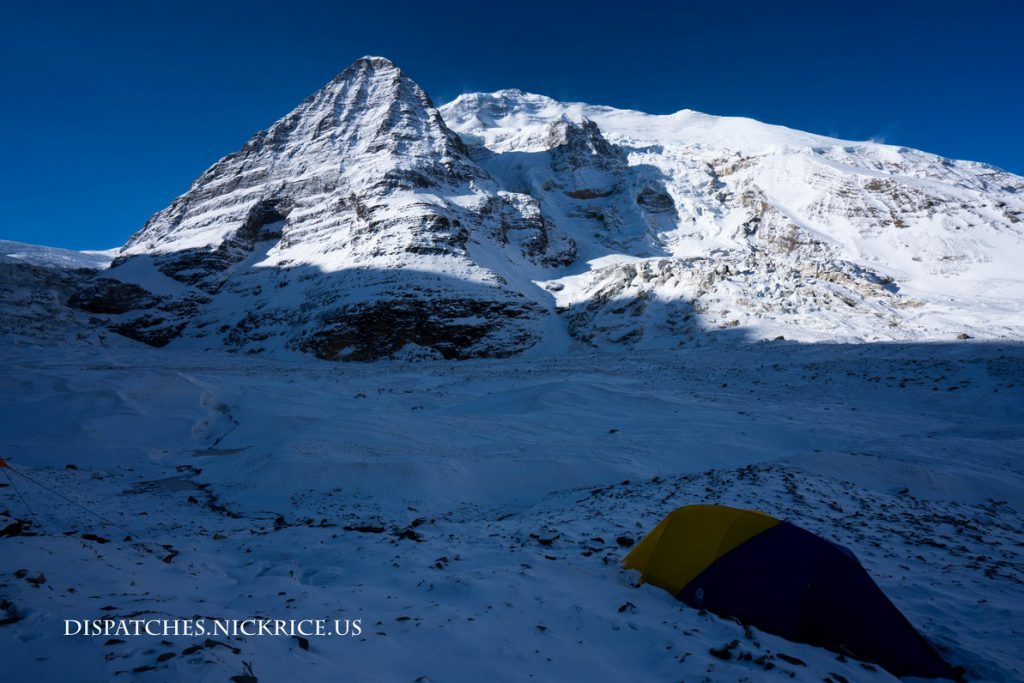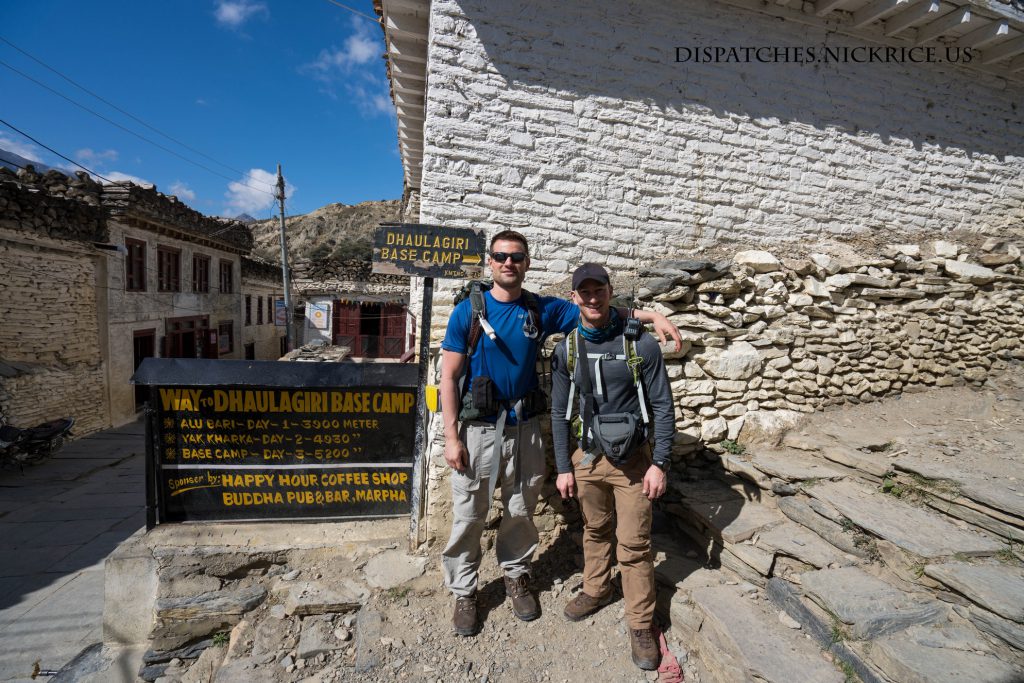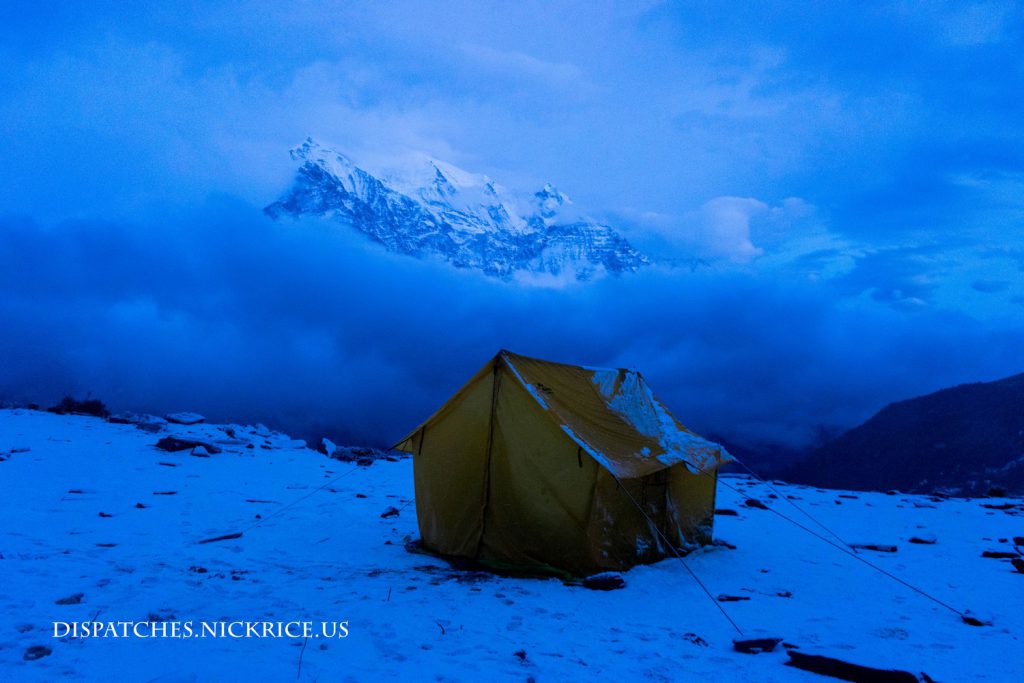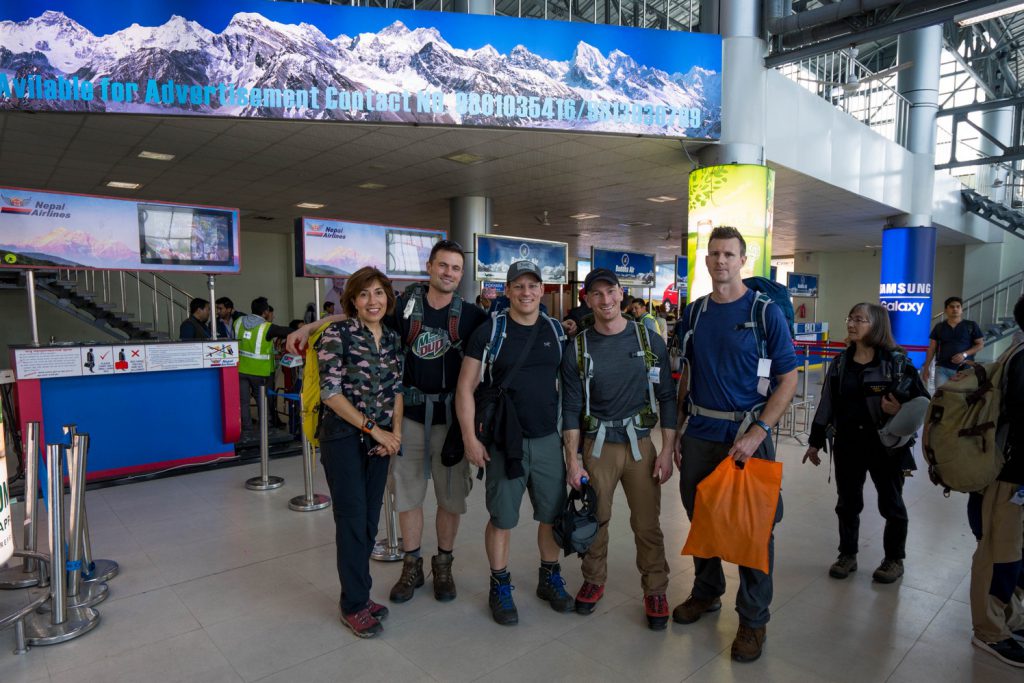

Today Ryan, Chris and I woke up at 5:00am, melted snow for water, prepared breakfast, and packed our backpacks for our respective days. Chris will descend to Base Camp to recover from his stomach bug, while Ryan and I will climb to Camp II and return to Camp I to sleep another night at altitude. Ryan started around 8am while I started at 9am. We both made steady progress toward Camp II in beautiful weather, keeping in contact over the radio. Ryan reached Camp II in just 4.5 hours while I made it later in the day in 4 hours (no doubt due to a better boot track). Ominous clouds began to drift our way, so we wasted little time in Camp II, took a few pictures, and retreated to Camp I. The clouds caused whiteout conditions on my descent, but fortunately, I had my tracks saved from the ascent on my satellite tracker, so I was able to verify that I was on the correct route. Snow began to fall, and as I continued my descent, my right foot punched through a weak snow bridge over a large crevasse. I landed hard on my rear while my left foot remained above ground anchored by my crampons in its original position. Unfortunately, this resulted in a large amount of force placed on the upper head of my fibula and the connective tissue in that region. I realized quickly as I began to scoot backwards out of the crevasse that I had injured myself and as I stood up, feared that I had broken or fractured something. I was able to weight the leg as long as my foot was perfectly in line with the direction of movement, however, if my foot shifted, which is does all too often in snow with crampons, it caused excruciating pain. With no other choice, I began to hobble down on my injured leg in the worsening weather, using my trekking poles to absorb some of the weight. I made painfully slow but steady progress down, and after what must have been a few hours, finally arrived to Camp I. I quickly went inside my tent and looked at the injury for the first time. No bones were sticking out, and there wasn’t a significant amount of bruising at that point, so I felt some relief, however there was evidence of swelling and the degree of pain I felt made me worry that it was a fracture of the fibula, allowing me to walk, while making stabilization movements painful. Ryan made me water, and I ate as many snacks as I could to help with recovery. Badia and Mauricio were also descending in the whiteout conditions and thankfully made it to Camp I without incident. I took a NSAID to help with swelling, then went to sleep.




































